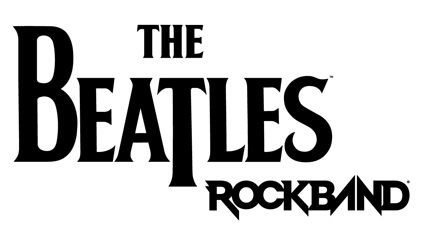For many (myself included), The Beatles: Rock Band is a foregone conclusion. We had two sequential thoughts when first strapping on a plastic guitar back in 2005. The first was, "Hey, this game is pretty awesome." The second, "Man I wonder if they have The Beatles in this game." For this group, all they’ll want to know is how awesome the game is. Well, it’s The Beatles in Rock Band – it’s awesome. There is, however, another group of gamers to whom this preview is dedicated. These folks want to know about is the mechanical differences in combos, changes in timing windows, and exactly how these new fangled vocal harmonies work. Read on, ye curious, and I hope you appreciate the fact that I managed the entire introductory paragraph without referencing any Beatles lyrics.
The Beatles: Rock Band’s largest addition to the Rock Band formula is three-part vocal harmonies. I never quite understood how they worked, even after reading several previews. Despite personally experiencing the failure of text in this regard, I will attempt it again. Up to three people can sing at the same time, each getting their own arrow on the scrolling vocal bar at the top of the screen. For the majority of songs – during verses usually – there’s only one blue vocal track. When harmony enters in, the vocal lines split into blue, yellow, and orange. Any of the three singers can sing anything they want at any given time – it’s not necessary to pick a particular vocal track and stick with it. The vocal meter fills as long as you are singing one of the correct vocal lines. In practice this means that all three singers will sing the verses together, and branch off for harmony during the chorus – sort of like how The Beatles did it. Weird how that turned out, isn’t it?
The three vocal arrows are distinctly shaped, so following your particular marker shouldn’t be too hard. The most difficult thing will be picking out the appropriate harmonic note, but that’s the point. No one said singing was supposed to be easy. Prospective players can look forward to that particular brand of hell that comes from listening to downright awful harmony until involved singers reach a palatable level of vocalization.
The second biggest mechanical change concerns drum solos. Now, instead of giving players a free-form fill, the game highlights a measure containing defined notes ending in a green. Hit them all perfectly, and the measure-ending green activates overdrive. I guess Harmonix didn’t want Ringo Starr posthumously freaking out as hard has he could for two measures of I Wanna Hold Your Hand. Other changes are marginal. Players can turn No-Fail Mode on and off from the difficulty selection screen and all songs come unlocked through Quickplay on day one. As our presenter eloquently (and aptly) explained, this means your Beatles Rock Band party on launch day doesn’t need to be an unlock party.
Aside from game mechanics, the most impressive aspect of The Beatles: Rock Band shines in Harmonix’s treatment of the Beatles’ legacy. Of course the game has famous venues like the Ed Sullivan show, loads of shrieking girls, and Rock-Bandified versions of The Beatles themselves, but the game’s content goes a step beyond. The Beatles’ career, as the Harmonix presenter explained during the E3 demo, is defined by two different periods. Screaming girls, simple songs about love, and live performances mark the first half of The Beatles’ legacy. Songs from this portion of their career are represented in game as you would expect – The Beatles on stage rocking the ears and libidos of throngs of young girls.
The second half marks the fab four’s discovery of acid and eastern religions. Songs from this phase were never performed live, so having The Beatles perform them live in game would have felt wrong. Instead, these songs accompany a visualization called a "dreamscape." These visualizations open with The Beatles recording in Studio 2 on Abbey Road. Before long, the walls melt away, replaced with trippy splashes of color and eventually more concrete imagery to accompany the spirit of the song. For example, Here Comes the Sun eventually places The Beatles on a flower-covered hilltop, cheerily crooning aside flitting butterflies and warming sunrays. I Am the Walrus, on the other hand, puts the band behind masquerade masks against a backdrop of fundamentally disturbing colors.
The Beatles are great, Rock Band is great, and Harmonix’s treatment of the source material does their legacy justice. The biggest problem concerns the game’s price, amount of content, and lack of compatibility with other Rock Band titles. The Beatles: Rock Band will have 45 tracks on disc. Retailing at full price, that rounds out to $1.30 a track. Not bad, given current DLC prices for Rock Band. Unfortunately, The Beatles: Rock Band is completely standalone. Songs from other Rock Band titles aren’t playable in Beatles and vice versa. Part of the justification of DLC price includes the ability to play it alongside a collection. Without the freedom to throw together a set list including both The Beatles and say, Linkin Park, the price suddenly becomes less justifiable. This ultimately amounts to tough noogies, though, since there’s no alternative. If you want The Beatles in a music game, this is your only (legitimate) option.
While I can kvetch and moan about the lack of interplay between The Beatles: Rock Band with other games and DLC, I’m kidding no one but myself. Harmonix has done a fantastic job with the source material, and $60 for the ability to access Beatles music, however limited, will be worth it to any Beatles fan.
The Beatles: Rock Band is slated for release September 9, 2009 for the Xbox 360, PS3, and Wii.
”
